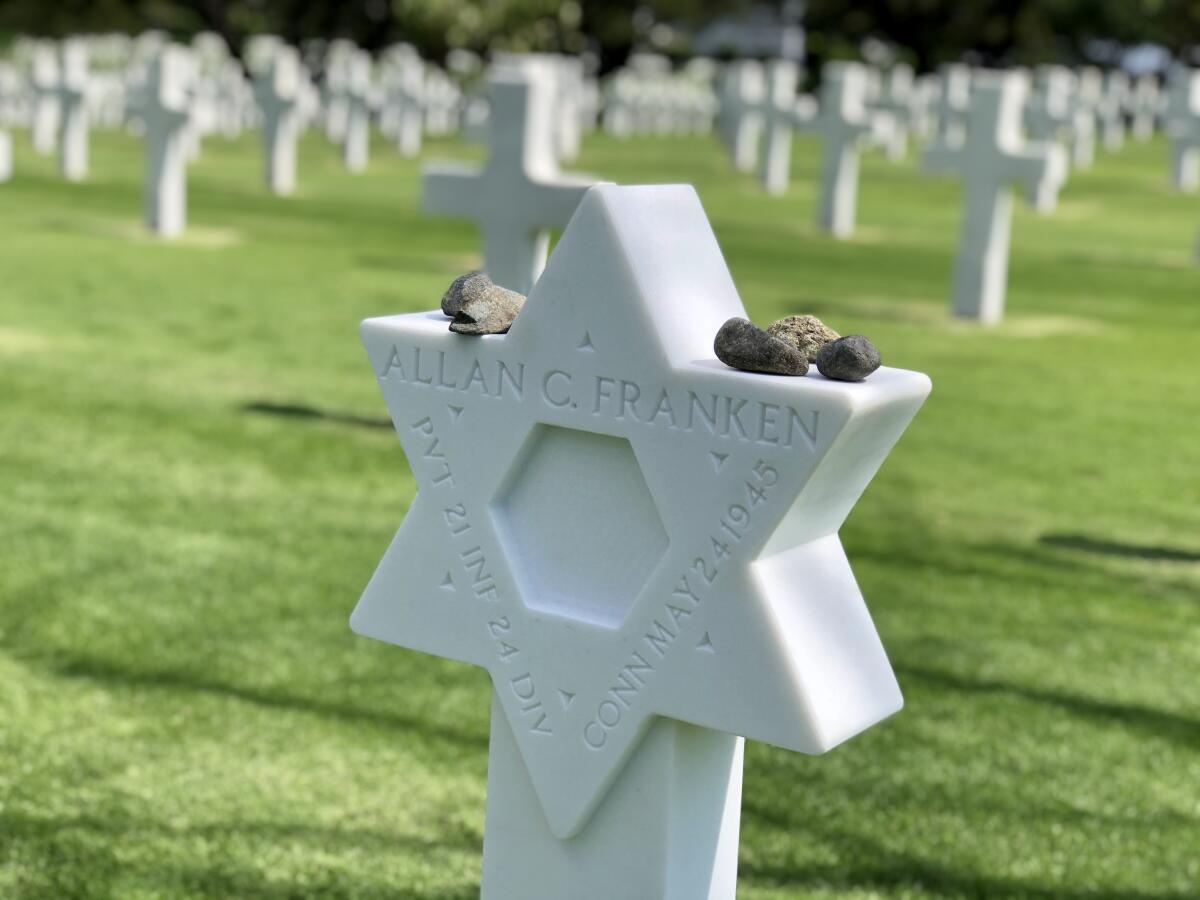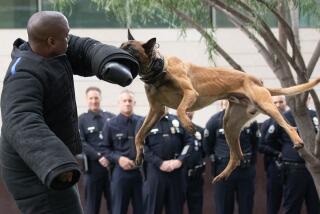Letters to the Editor: Honoring the Jewish soldiers who served and died in World War II

- Share via
To the editor: Kudos to L.A. Times reporter Shashank Bengali for his eye-opening article on Jewish soldiers killed during World War II who were mistakenly buried under Christian crosses.
My old and now deceased Berlin school mate, Harry Nomburg, recalled a similar World War II occurrence after he joined a British commando unit composed entirely of young Jews who had fled the Nazi regime.
The plan was to drop the commandos, who all spoke fluent German, behind enemy lines on D-Day to sow confusion in the enemy’s ranks. As part of the plan, the commandos were given British names and their dog tags listed their religious affiliation as Church of England.
The planned behind-the-lines drop was canceled, but Nomburg and his unit landed on the beaches on D-Day and he survived the war. Others in his unit were killed in action and, according to the religion listed on their dog tags, were buried under crosses in a British war cemetery.
It took decades to rectify the error and replace the crosses on their tombstones with a Star of David.
Tom Tugend, Sherman Oaks
..
To the editor: Why weren’t the dead Jewish soldiers and airmen identified by their dog tags?
I served in the U.S. Army during part of the Korean War. Our dog tags contained, among other things, an abbreviated identification of the individual’s religious preference. I’m sure that was true for those who served in World War II.
The dog tags were on a thin chain that was worn around the neck at all times and not removed until the end of one’s service. My recollection, though now somewhat faint, is that there were two tags on the chain.
I suppose that in some instances, the cause of death obliterated the information on the tags. I would think, without really knowing, that such obliteration was rare, and the dead individual’s identification and religious preference remained reasonably intact.
John H. Sharer, Los Angeles
More to Read
A cure for the common opinion
Get thought-provoking perspectives with our weekly newsletter.
You may occasionally receive promotional content from the Los Angeles Times.









